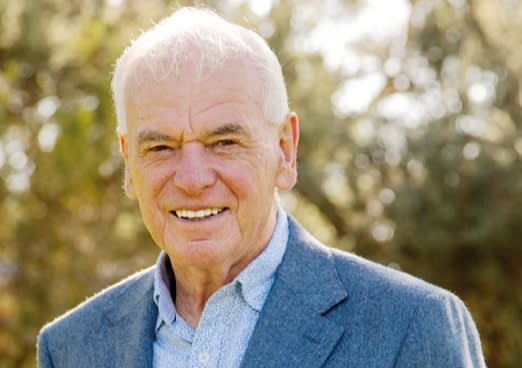All (retirement village) eyes are on Canberra and care
Over the last three months there has been a flurry of activity in the retirement living sector to position villages as a care solution, in Canberra, within the sector and with customers. Will villages be providing 50,000 beds into the residential...

Over the last three months there has been a flurry of activity in the retirement living sector to position villages as a care solution, in Canberra, within the sector and with customers. Will villages be providing 50,000 beds into the residential care system within five years? We say yes. Three months ago the Retirement Living Council released its advocacy report ‘Better Housing for Better Health – the Care and Cost Effectiveness of Retirement Living.’ And now they have released a discussion paper for the Federal Government with five recommendations they would like to see taken up in the May budget. See the five items in this issue of The SOURCE. And this week ACCPA (the Aged & Community Care Providers Association), the peak body for the aged care sector, created a new position, Director of Retirement Living and Seniors Housing, appointing village veteran Mark Prosser, and Mark Berezdecky as Senior Policy Advisor. In other words, for the first time, the care sector is going hard to bring retirement village operators into their aged care focused tent. As ACCPA explains to us, their largely Not For Profit members, especially the big members, are pivoting away from the straight and restrictive residential care business model with federal oversight, to the less restrictive and labour light retirement village model with homecare overlaid. We call this private aged care - the LDK model at its highest level – or assisted living in its simplest model. Is it also a grab by ACCPA for new fee paying members – pulling in private retirement village operators? Or is ACCPA looking to protect its aged care turf? The LDK model shows that its new residents are older and on average stay four years in the village, down from an average of eight years for the non-care/independent living model. Both the RLC and ACCPA are saying to Canberra, retirement villages should be recognised as a new source of care accommodation. Canberra appears to be recognising this with its first draft of the new Aged Care Act where the first time it recognises retirement villages in the care journey. It is possible, even probable, that within five years half retirement village beds will be occupied by people who could be in residential care. This would add 100,000 beds to the aged care system, or a 50% increase, with the accommodation and daily living expenses paid by the customer, not the government. Even if this delays entry to the aged care home by four months for say 50% of potential residents (with the other 50% dying in the village or hospital), this is significant. 50,000 beds at a cost of $350 per day for four months is $2.135 billion; the average home care package is $29,000; the government would save $685 million for the four months. The figure is likely higher because home care services will be more efficient in the village; i.e. less than a $29,000 cost to Government. Against this backdrop, we regularly point out that virtually no new aged care beds are being built. 890 were built in 2021 and 1,550 in 2022 against the government figure of 8,800 new beds being required every year through to 2040. For villages to supply 100,000 beds at no cost to government is ‘gold, gold, gold’. For village operators, they will be also be ‘stuck’ with ageing residents because it is going to be exceedingly hard to readily find a residential aged care bed to move (decant as some say) a resident to. Blind Freddie can now understand why ACCPA wants in to be representing retirement villages. They will be part of the care supply stream, ACCPA’s core playground. Will land lease communities be next on ACCPA’s horizon? We already have Palm Lake Resorts, our oldest major LLC operator, operating seven aged care homes adjacent to their land lease communities. 65 -year-olds inevitably age to 80+. Will there be a parting of the ways in retirement village sector, with private operators who don’t want the complexity of care championing independent living and giving the Not For Profit sector their natural playground of the more complex private aged care and assisted-living? Possibly. But I refer back to a LEADERS SUMMIT in 2014 where one of the founders of the retirement village industry and owner of the 650 home The Village Glen, Chas Jacobsen (pictured), said in our podium conversation:

“It is essential you take the responsibility of how you get your resident to still stay, and you have asked them to come and trust you, you’ve taken their entry fee and you’ve created this lifestyle and then you have you have destroyed it if you can’t provide that (care) continuity.” See the video HERE at 25 min 11 sec.
Chas created the Village Glen 45 years ago. Perhaps we are back where we started. To understand these seismic shifts join us at the LEADERS SUMMIT at the Hyatt Regency Sydney in six weeks’ time, Tuesday 19 and Wednesday 20 March. Learn more HERE.





